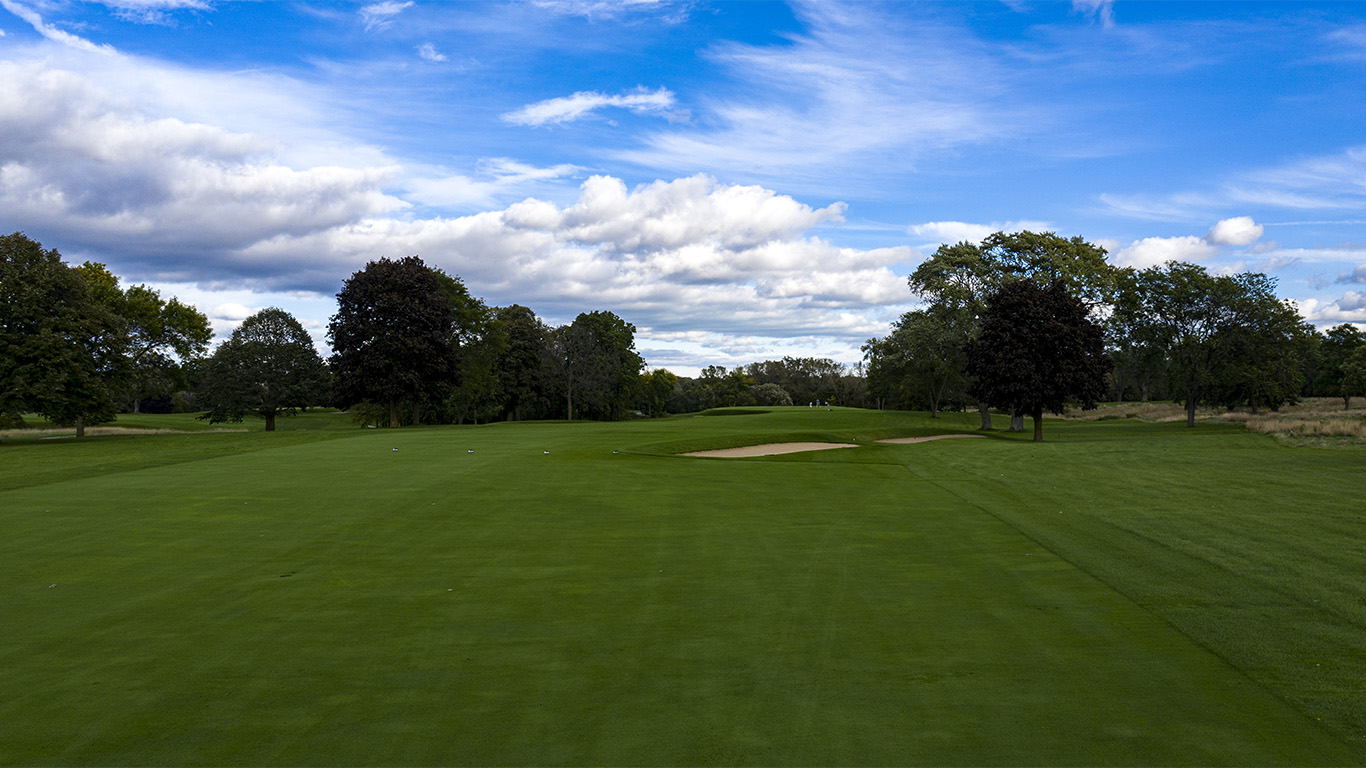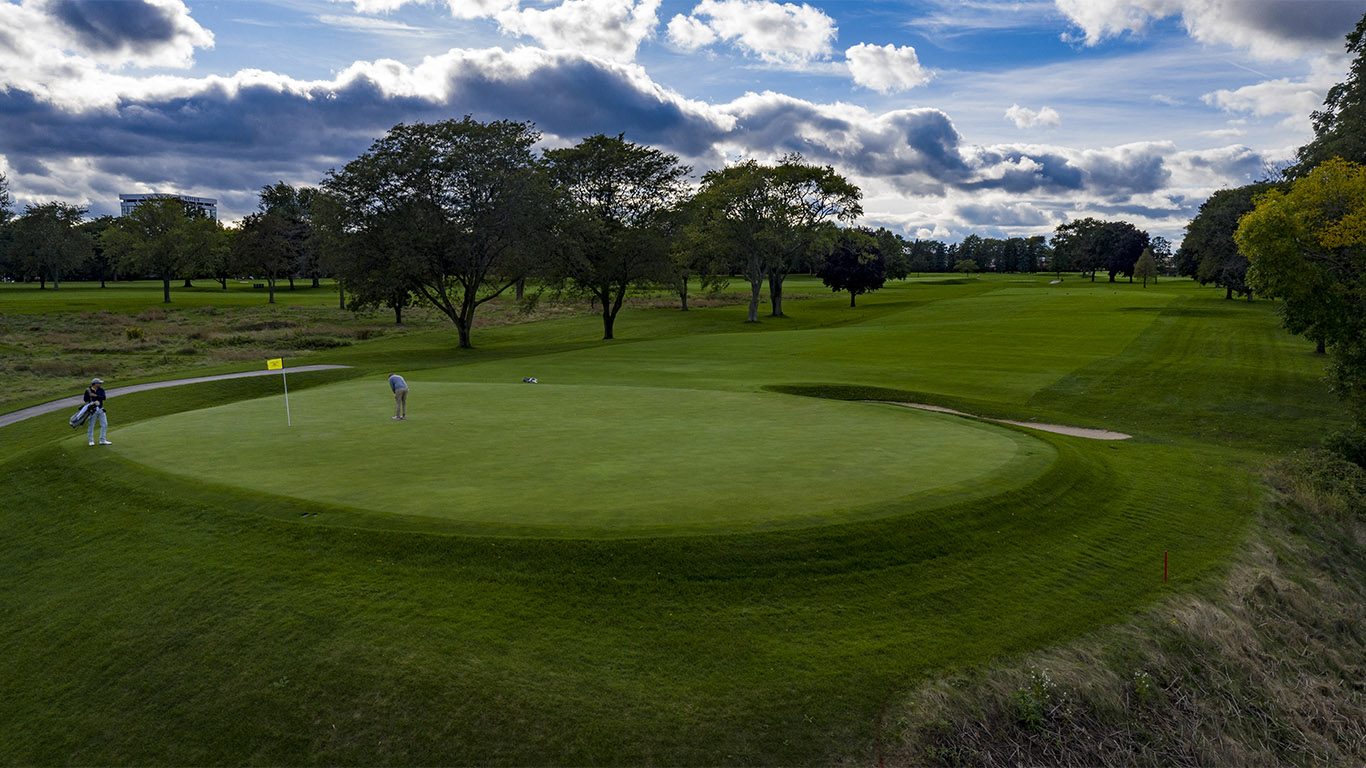History
Most of C.B. Macdonald’s template holes use design characteristics from other great Scottish holes. The “Cape hole” is a C.B.M. original. He first used the design on the 14th at National Golf Links of America, which originally played as a 305 yard dogleg right to a green surrounded by water on three sides. Fearing technological advancements would make the hole drivable, Macdonald later lengthened the hole, moving the green back and surrounding it with bunkering on three sides.
Characteristics
In today’s modern architectural world, a Cape hole’s defining characteristics are the diagonal tee shot over water and the bunkering around the green. This is different than Macdonald’s original intention of a second shot to a green jutting out into water.
Off the tee, a player is forced to drive over a diagonal water hazard and determine how much to bite off. Often times, Macdonald and Raynor would have the fairway kick toward the hazard, making cutting off a large chunk a riskier proposition. On a player’s approach shot, they are met with an intimidating shot to a well-protected and undulated green. A Cape hole’s green is surrounded on three sides by water or bunkers. This feature makes the green look as if it is floating over a water hazard. Cape holes are usually par-4s and can range in length from the low 300s to mid 400s.
Strategy
The Cape hole is the ultimate risk/reward design. The ideal way to play the hole is by shaping a tee shot to limit the risk while shortening the second shot into the green. If the hole is moving to the left over the hazard, a right-to-left shot is ideal. If the hole is moving to the right over the hazard, a left-to-right tee shot is preferred.
On the approach to the green, a player must also decide whether or not to risk attacking the pin and bringing the hazard (water or a bunker) into play. A safe shot is to play to the center of the green and try and make a long putt on a typically undulated green.
National Golf Links of America – 14th – 393 yards
The modified 14th at NGLA features a tee shot that plays over the Sebonac Creek, which runs along the right side of the hole. Depending on the tee position and player, it is drivable with modern technology. One of the toughest aspects of the 14th is the tee shot as the ground contours severely from left to right. Architect C.B. Macdonald was a chronic slicer of the golf ball, which makes this design interesting. I would guess that Charlie lost quite a few golf balls in the creek right. The green floats over the Sebonac Creek and with thin rim of bunkering on three sides. Bailing out to the right opens up the possibility of finding one of the nasty pot bunkers.

The tee shot on the Cape hole 14th at National Golf Links of America - Photo Credit: An Ambulent Golfer
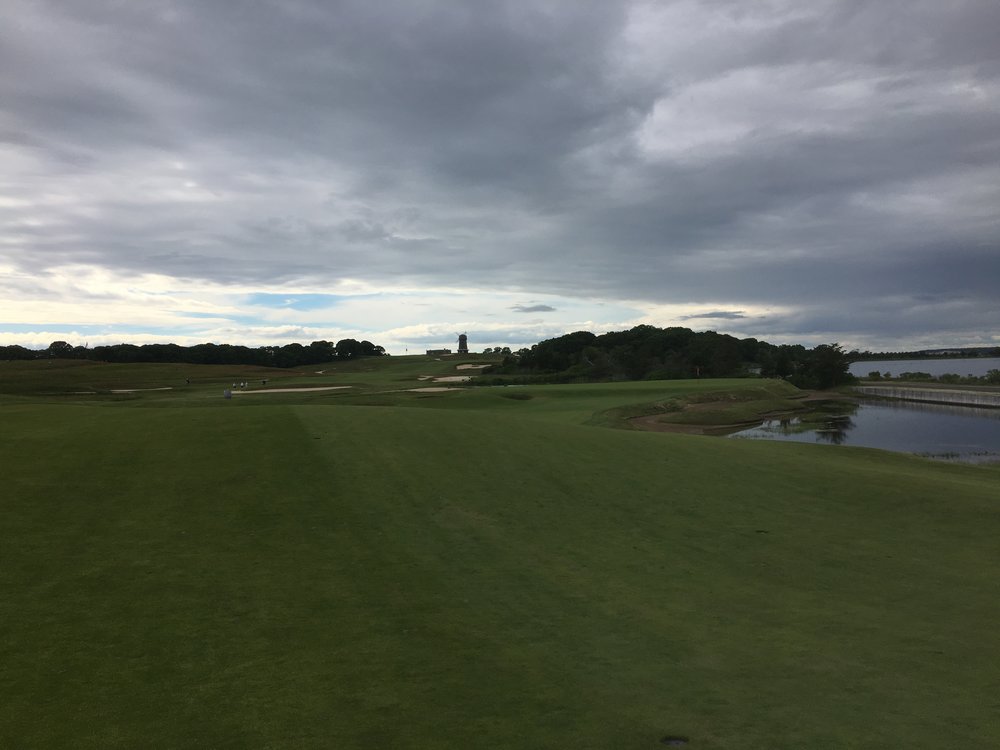
The approach into the Cape green, surrounded on three sides by hazards
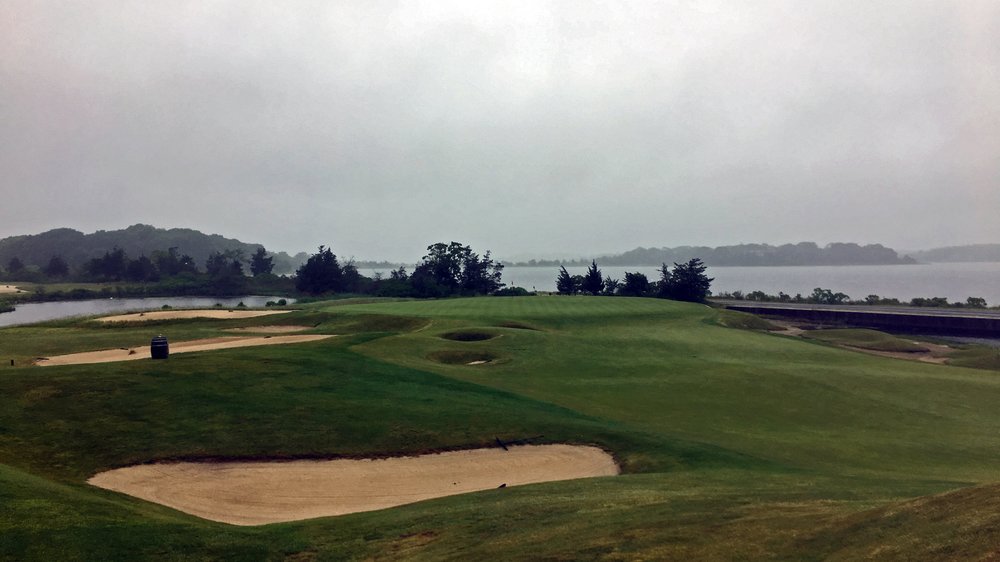
The bunkering waiting to punish left bailouts
Mid Ocean Club – 5th – 433 yards
Perhaps the most famous Cape hole in the world is at C.B. Macdonald’s Mid Ocean Club on the island of Bermuda. The 5th hole is an absolute brute that plays from right to left over Mangrove Lake. An ideal tee shot is a draw that helps to cut down the yardage. If a player lays back or fails to turn their tee shot over, they will be left with a long approach shot to a green where trouble surrounds all sides.
It’s rumored that Babe Ruth once played the course and continually attempted to drive the fifth green until he had put 20 golf balls into the Mangrove Lake.

Possibly the best cape hole, the 5th at The Mid Ocean Club - Photo Credit: Spencer Waresk
Chicago Golf Club – 14th – 351 yards
The short Cape hole 14th at Chicago Golf exemplifies the principles of the hole’s design. It’s a waterless hole that with a long diagonal cross bunker guarding the aggressive line off the tee. The green is surrounded by sand and makes for difficult half wedge shots after a long drive — particularly if the ball doesn’t find the fairway. Chicago Golf’s version of the Cape shows that it’s the second shot, not the tee shot, that makes the hole a Cape design.

The 14th at Chicago Golf Club, with its fairway bunkers forcing a choice from the tee

The approach into the Cape green, surrounded by peril
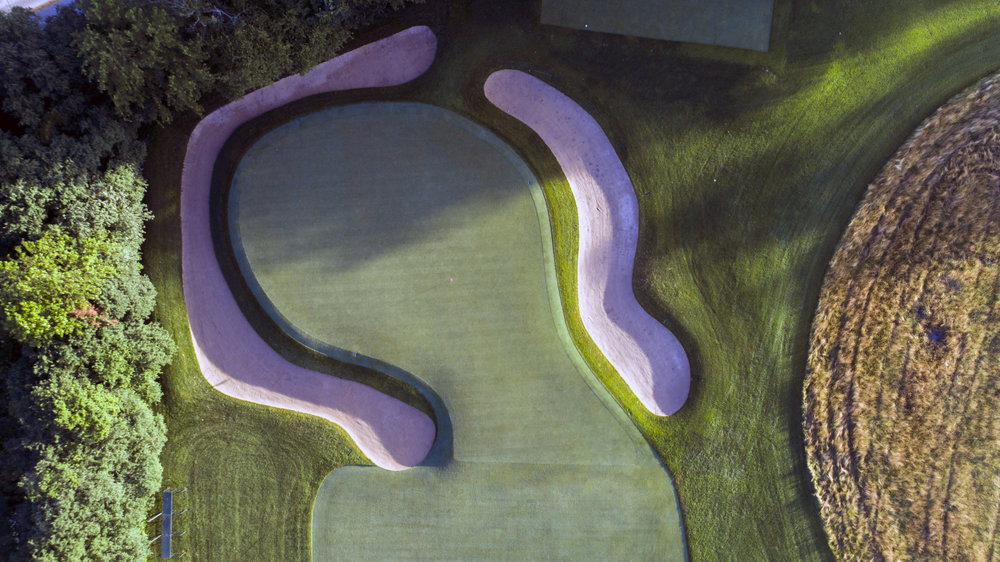
The canted and contoured green, from above
The Course at Yale – 2nd – 374 yards
The 2nd hole at Yale is the boldest of any Cape hole in North America. Off the tee players are faced with a dramatic fairway landform that marks the ideal position for an approach. The right portion of the fairway uses a hogsback feature to repel shots too far right down into a valley. Players who reach the top of the ridge are rewarded with an ideal view into the angled green. Any miss left into the 20′ deep bunkers are certain bogeys and bailing right leaves a devilishly fast shot towards the hole. All of these ingredients make the 2nd at Yale one of the greatest holes in golf.



Shoreacres – 2nd – 346 yards
A beautiful short cape hole at Seth Raynor’s Chicago gem, the second is one of my favorite holes in golf. The water hazard here is a creek that cuts down the left side of the fairway and behind the green. The also fairway uses a sharp slope on the left that can kick an overaggressive shot into the creek. I typically play this hole by drawing a 3-iron off the right fairway bunker to leave a wedge shot to the challenging green. The approach is a nervy one when the pin is on the left or back of the green as the creek is very much in play. The green is large and undulated, making long putts difficult.
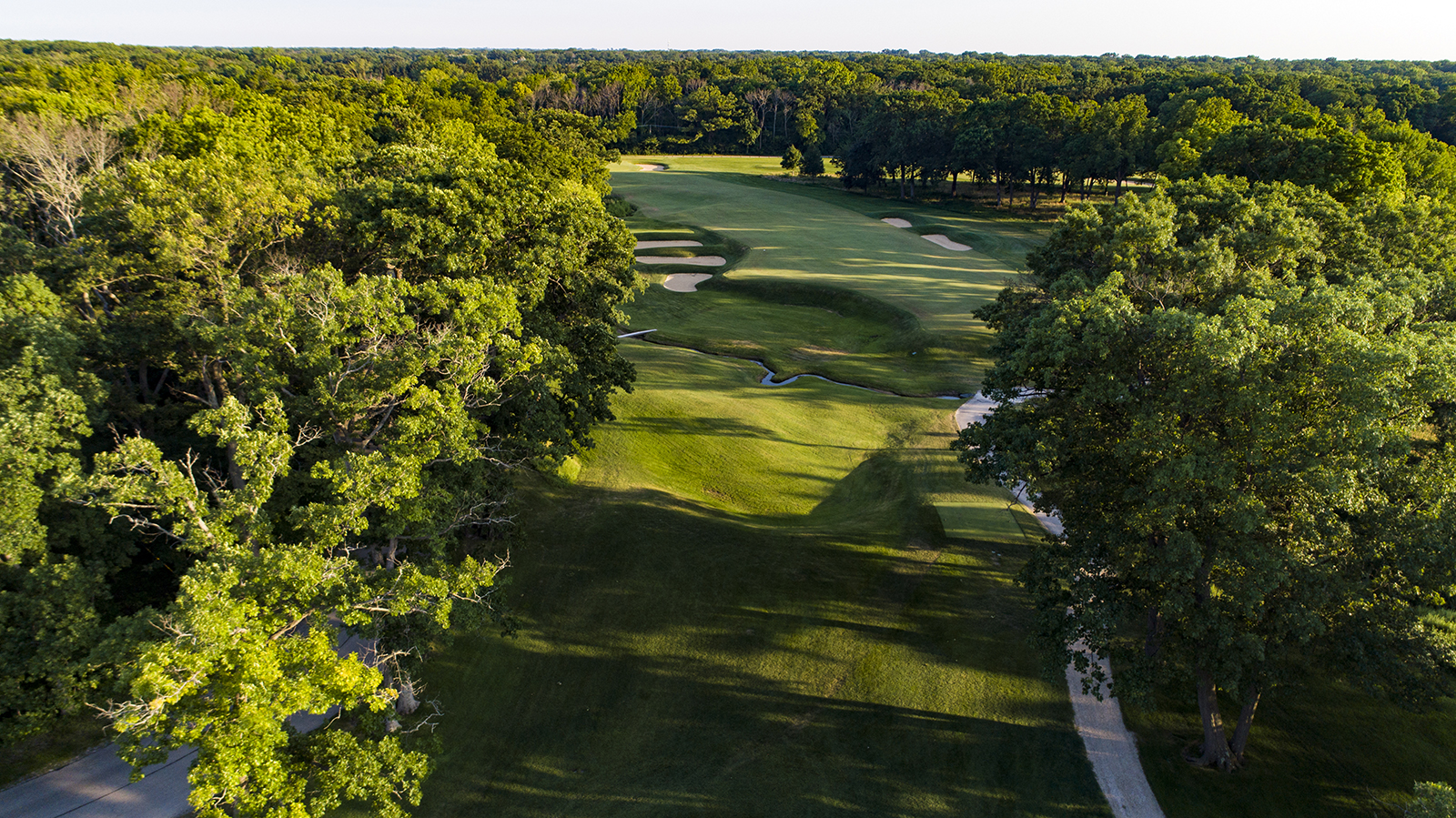
A great short Cape hole, the 2nd at Shoreacres
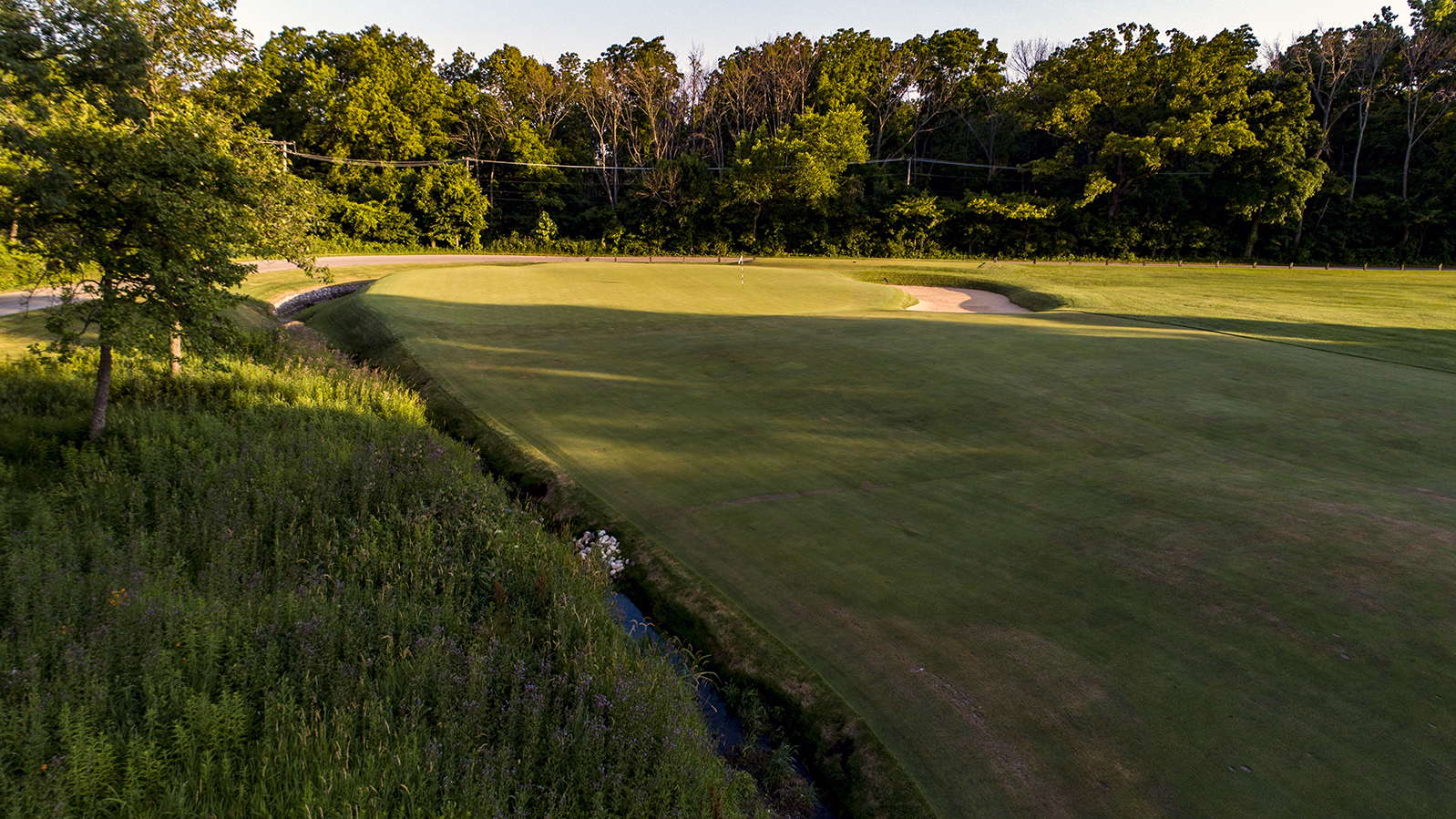
A look from behind the 2nd green at Shoreacres, the creek playing a pivotal role
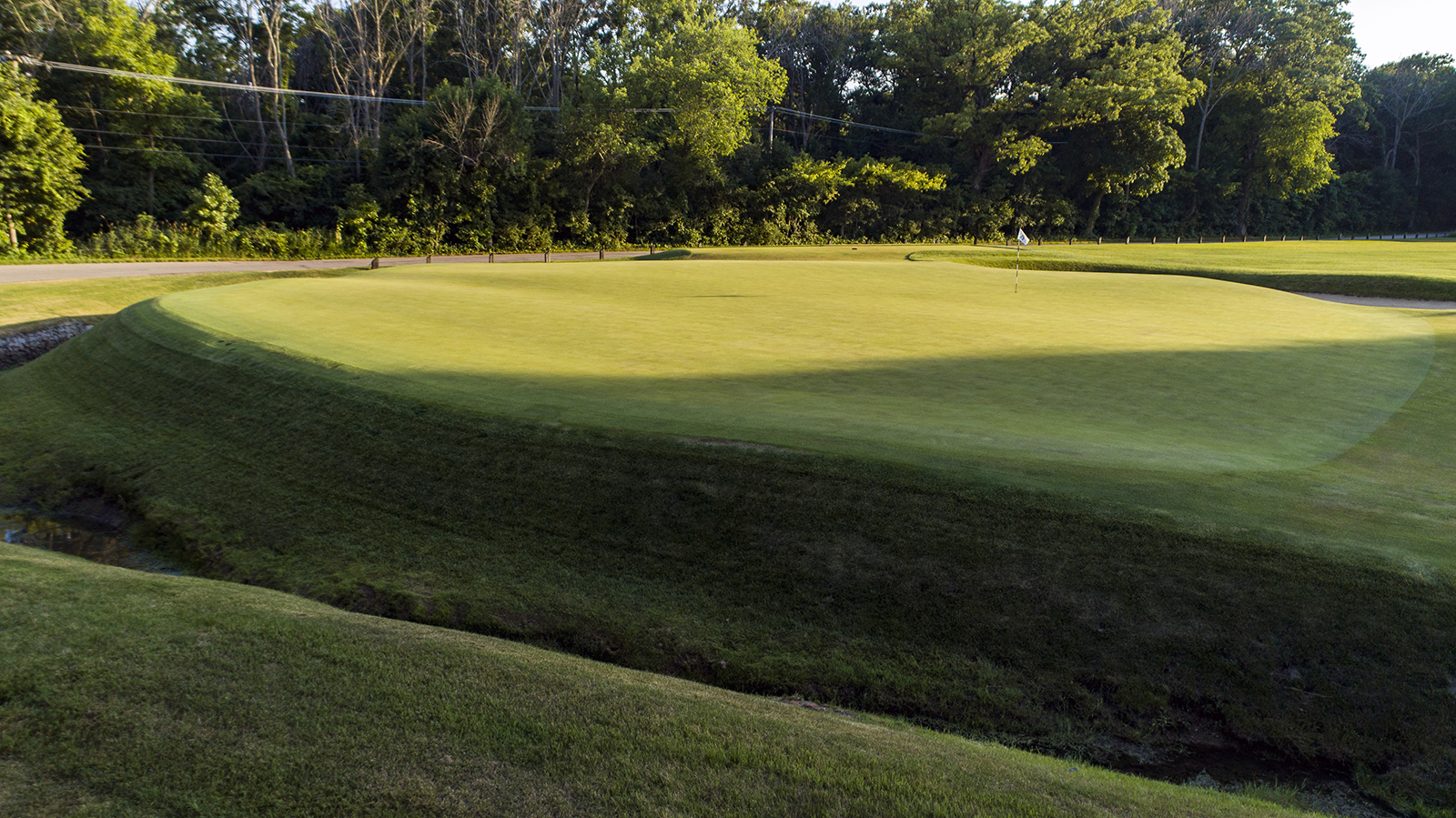
Blue Mound Golf & Country Club – 11th – 382 yards
The short par 4 11th at Blue Mound plays to the edge of a large ridge on the property. There, a cross bunker guards the preferred angle into the green up the right side. The green is a peninsula guarded by treacherous bunkers, and any shot that misses long left will tumble down into a water hazard.
St Louis C.C. – 8th – 350 yards
The 8th at SLCC is a true Cape hole as the green juts out into the water hazard. This leaves players with an intimidating approach shot to this gem of a short par-4. According to Kyle Traux, the hole is “the best hole on a great course.” The tee shot gives a player options as they can risk it all with an attempt to drive the green or layup short. A safe layup off the tee leaves a wedge approach that demands your attention. Fescue recently replaced the trees down the right side, revealing the beautiful vista.
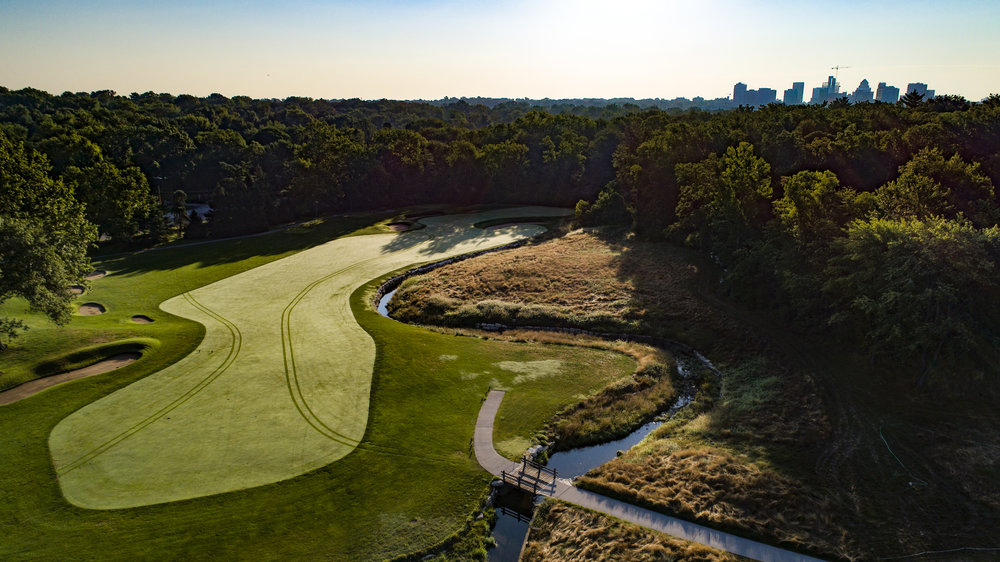
An aerial view of St. Louis CC's 8th

The tee shot at the beautiful 8th, challenging players to be as aggressive as they dare - Photo Credit: Kyle Truax

The approach into the 8th, trouble lurking on three sides - Photo Credit: Kyle Truax
Fox Chapel Golf Club – 5th – 342 yards
Another great short Cape hole is at Oakmont’s neighbor, Seth Raynor’s Fox Chapel Golf Club. The 5th hole at FCGC calls for a right to left shot off the tee. A player would be wise to challenge the water in order to not leave a long shot to a well guarded green. The marsh protects the left side of this elevated putting surface and deep bunkers guard the rest.
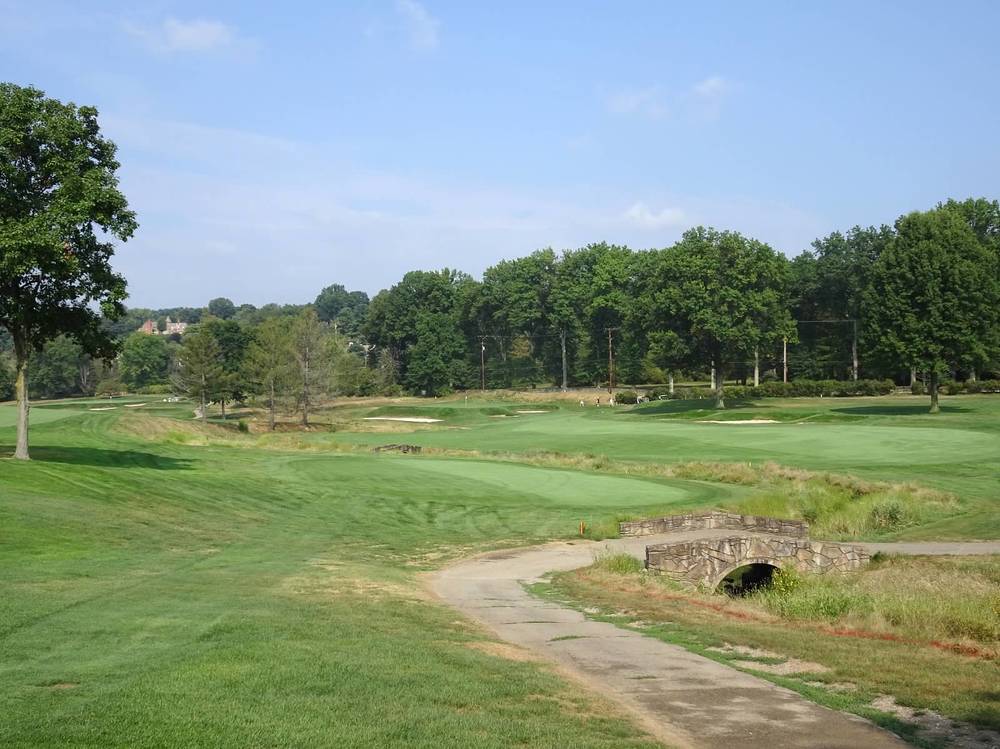
The tee shot on Fox Chapel's 5th, over the diagonal hazard
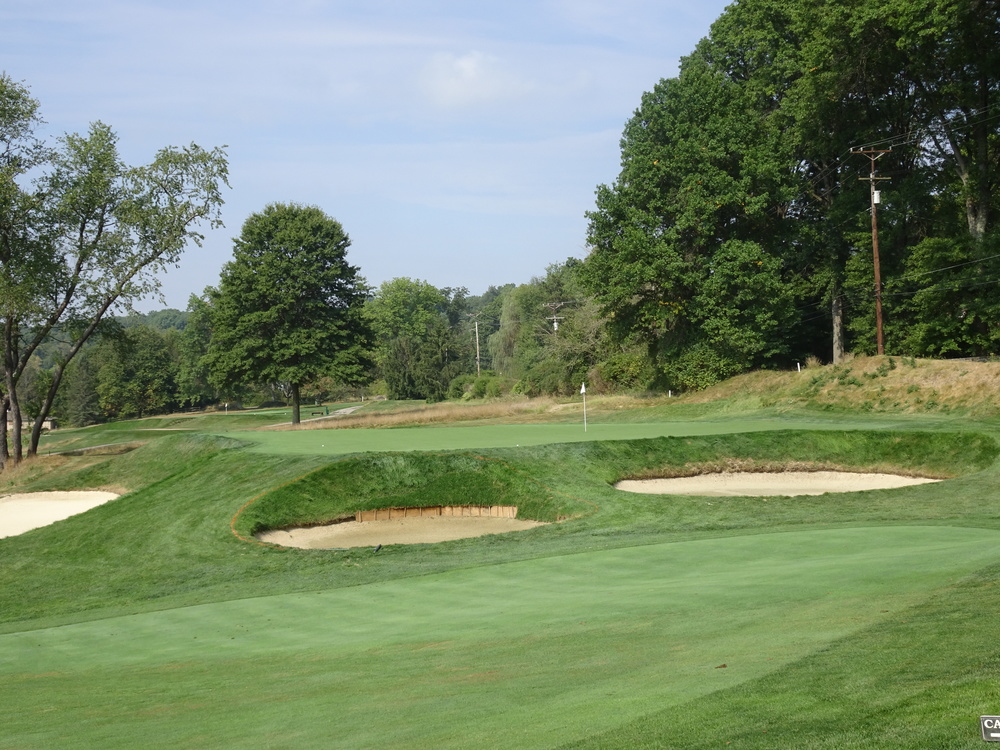
From right of the green, bunkers still left to be avoided from the right angle
Fishers Island Club – 14th – 425 yards
The Cape hole at Seth Raynor’s Fisher’s Island Club is an absolute beauty that doglegs left around a large water hazard. An aggressive tee shot up the left yields a shorter approach into the green, while safe shots to the right will leave a long-iron second shot. Unlike other Capes, this version forces players to play over the water on their second to reach the green that is guarded by the hazard and bunkers, with only a small bailout area short and right.
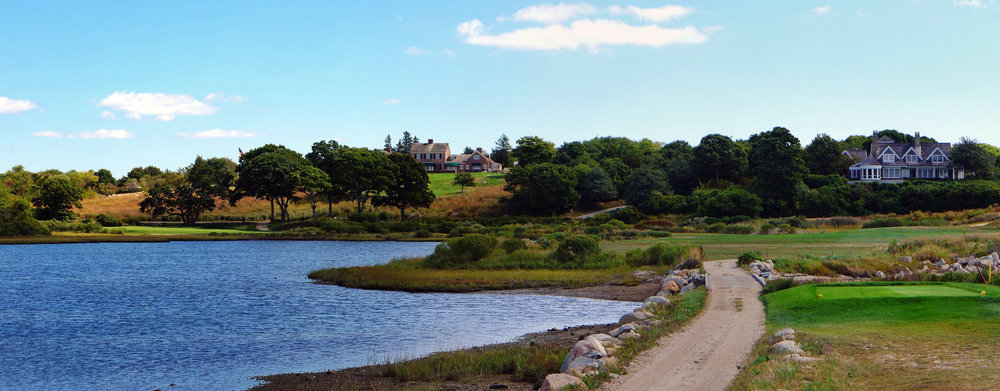
The tee shot at the par-4 14th at Fishers Island - Photo Credit: Jon Cavalier
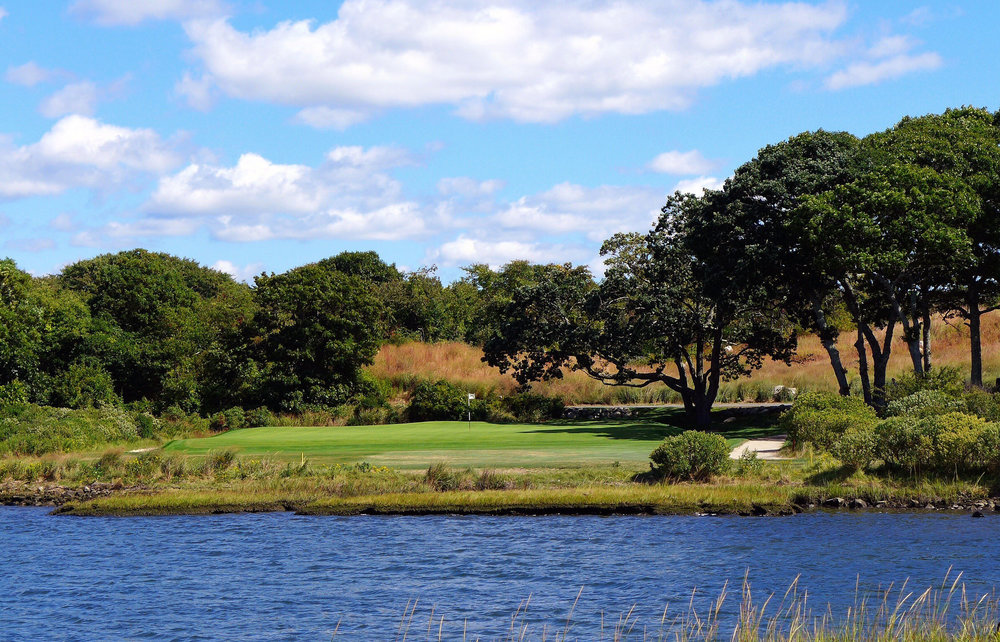
The approach to the 14th, with a forced carry over water - Photo credit: Jon Cavalier @linksgems
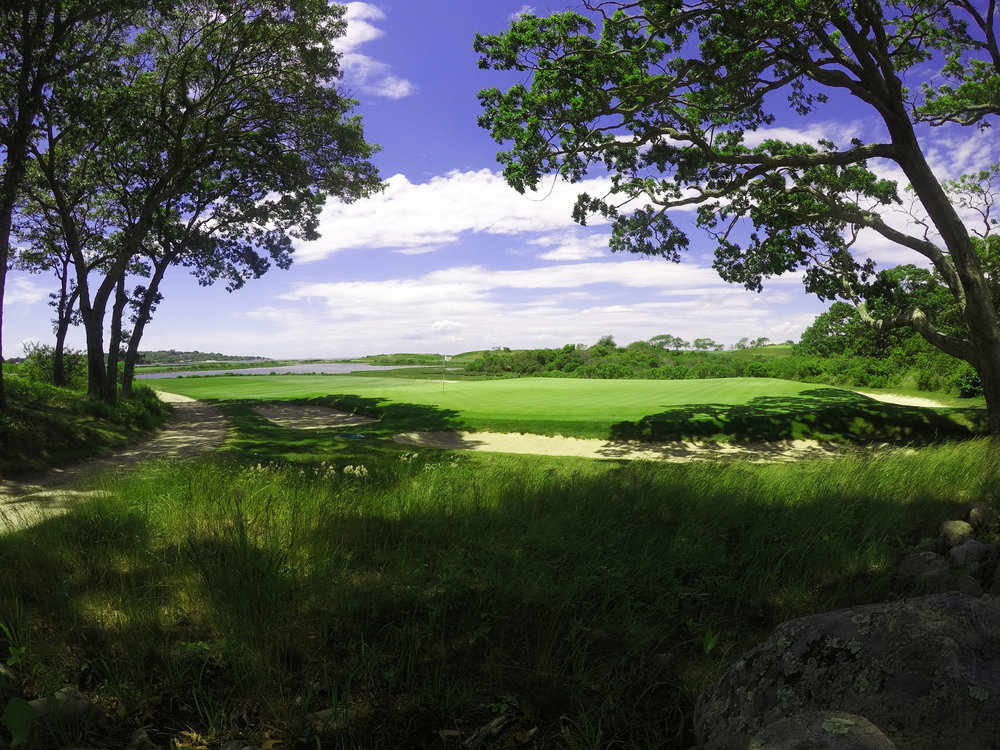
Looking back at the beautifully set Cape green at Fishers Island Club - Photo Credit: Jon Cavalier
Camargo Club – 13th – 369 yards
Seth Raynor’s design in Cincinnati doesn’t have water hazards on the course, and it’s Cape hole thus plays around a tall grass hazard. A tree marks the turn, forcing players to hit right or left to set up a clear approach into the green. The green is seemingly raised above the tall grasses, heavily bunkered, and any shot that misses right will tumble down towards the thick stuff.
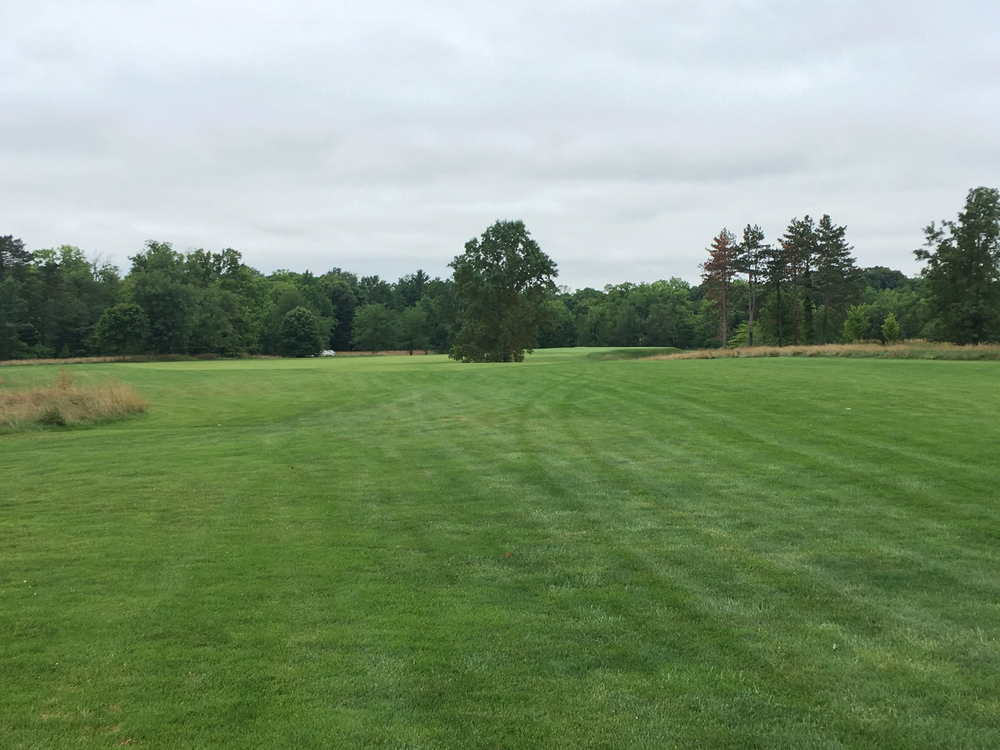
The tee shot at Camargo's Cape hole, the 13th, forcing the player to choose a side - Photo Credit: An Ambulant Golfer
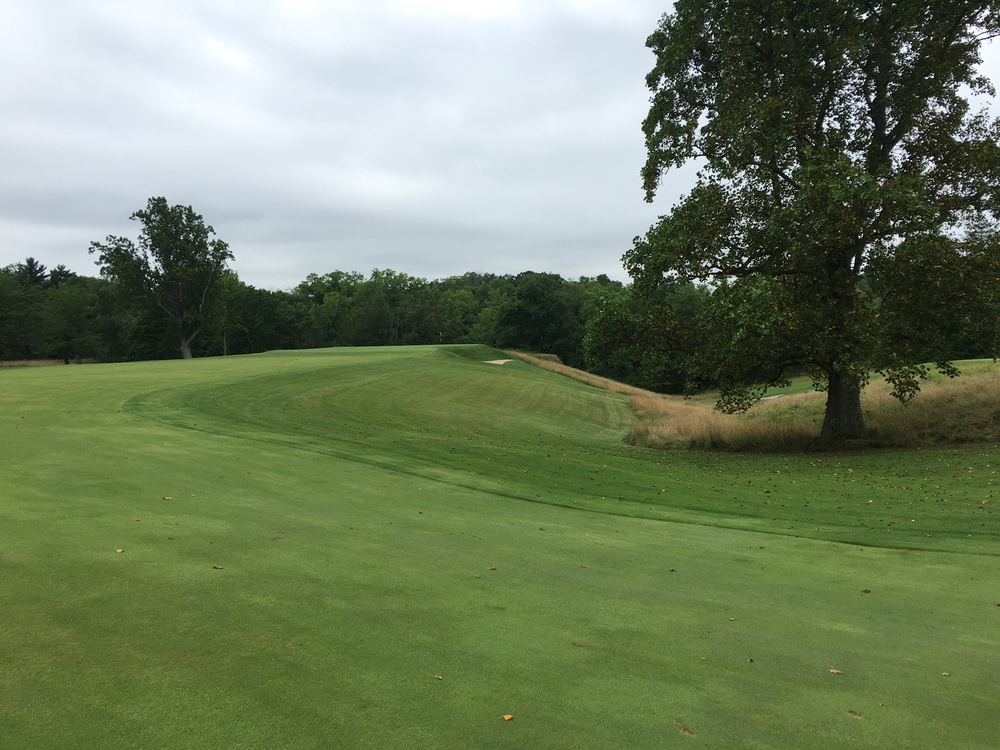
The tough second shot at the 13th must be precise - Photo Credit: An Ambulant Golfer
Midland Hills C.C. – 8th – 340 yards
Until recently, the right side of the 8th at Midland Hills was muddied with too many trees. Thankfully, many trees were removed, opening up the beauty of the hole. A Seth Raynor design, this hole features a large lake that cuts along the right side that needs to be navigated off the tee. Long hitters will need to really rip a tee shot to clear the water, which is a 270 yard carry from the back tee.

The tee shot at the Cape hole 8th at Midland Hills C.C. - Photo Credit: Mike Manthey
Black Creek Club – 15th – 347 yards
This Brian Silva design in Chattanooga features a short Cape hole on its finishing stretch. A birdie opportunity is available with a good tee shot, but a wayward one can lead to a big number. The marsh runs along the entire left side of the hole, and the bunker deters players from bailing out right.
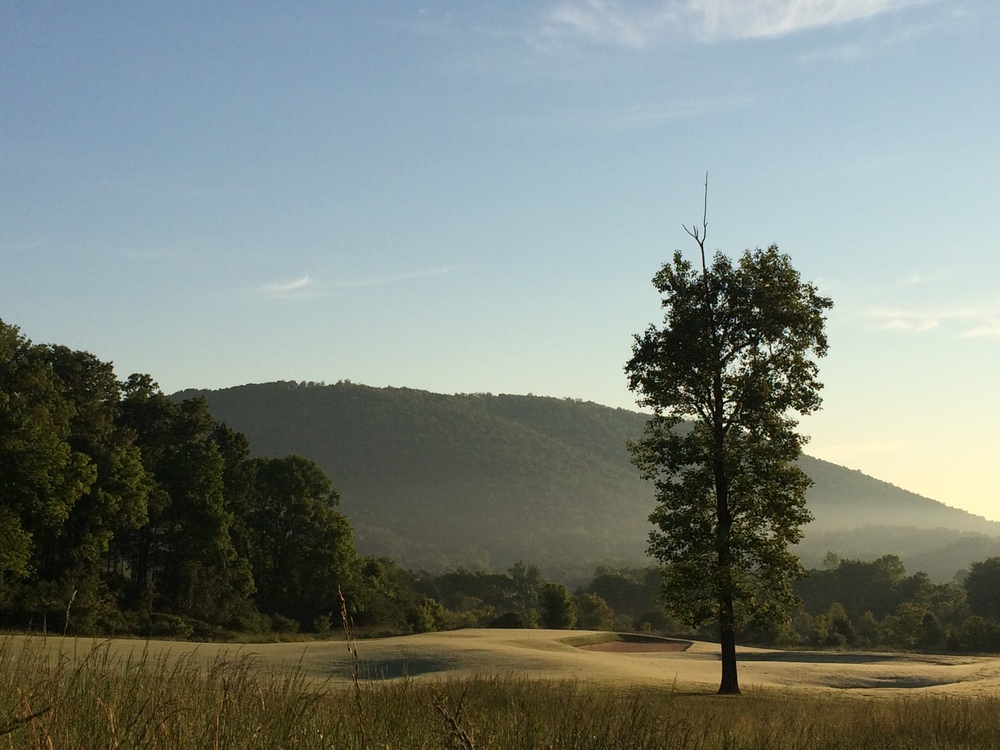
A look at the Cape hole 15th at Black Creek Club - Photo Credit: Scott Wicker


 by
by 